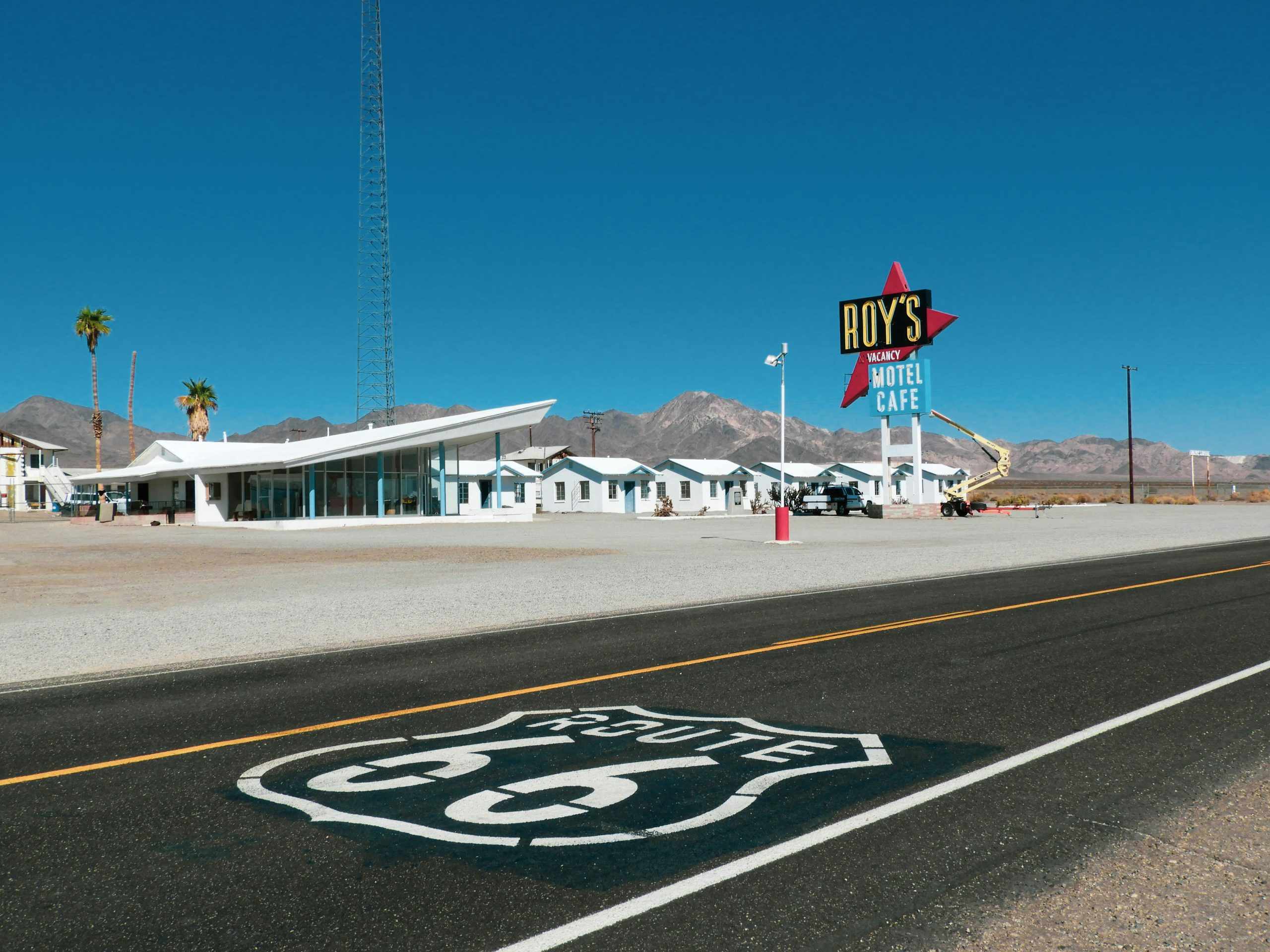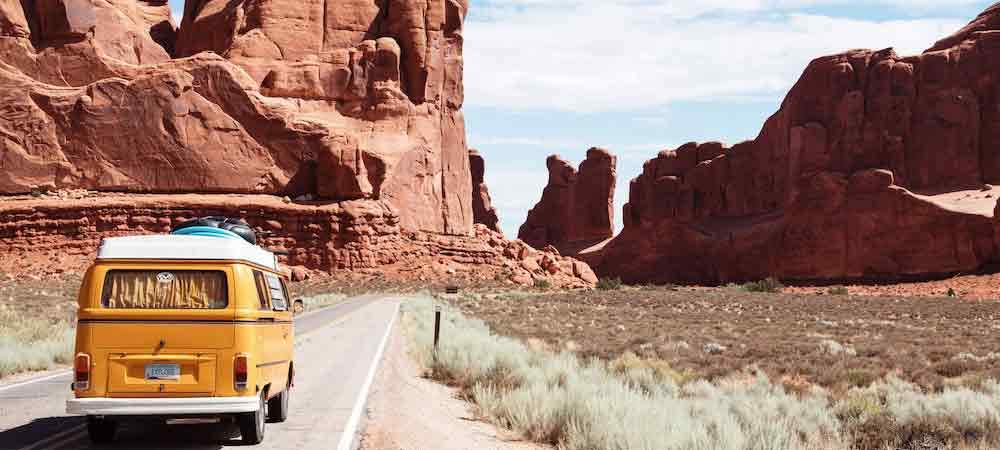The U.S. is an amazingly diverse place when it comes to people, cultures, towns, and geography. Although the thought of deserts might conjure images of the Sahara more than the Southwest, there are actually a wide variety of deserts spread throughout the United States.
From Utah’s Great Salt Lake Desert to Arizona’s Yuma Desert, you’d be limiting your possibility for exploration if you didn’t consider parking your RV next to a cactus or sandy dune for a few days. Plus, camping in the desert can be a great way to extend your RVing season, since desert temperatures are much warmer—at least during the daytime—than mountain or wooded climates often are. I mean just look at the beauty in the video below from the National Park Service!
But of course, heading into a dry climate with unpredictably hot temperatures requires a bit more prep than just rolling into a cushy national park campsite. So before you start driving toward the middle of the sweltering New Mexico desert, do yourself a favor and read our 8 tips for RVing in the desert.
1. Bring double the water you think you’ll need. Then double it again.
Aside from the fact that deserts are hot, and you’ll obviously work up a thirst, they’re also super dry. So even if the temperatures aren’t making you sweat, the dry air will make you thirstier than other climates. It’ll also dry out your skin, lips, and eyes, so chug that water, even if you don’t feel dehydrated.
Keep in mind too that many desert campsites are fairly remote and may not have extensive water and facility hook-ups. That means you may be boondocking—or at least going without endless running water—so overestimate how much you’ll need. Remember to account for water for a solar shower, if being stinky and sweaty all week isn’t your thing.
2. Re-think your schedule to avoid the desert heat.
Consider swapping your mid-day hike for an early morning sunrise hike or maybe an evening stargazing session. The goal is to avoid the mid-day heat. Even if you’re drinking enough water, that much sun beating down on your skin can cause headaches and nausea. So set the alarm for nice and early and go hike somewhere to watch the sunrise. Come back to the (relatively) cool shelter of your RV and campsite during the peak heat, then head back out later into the evening when the temperatures begin to head back down.
3. Do your research on critters you may find.
If you normally hike in the mountains of northern Colorado but are headed to Joshua Tree National Park for a week, prepare to swap marmots and butterflies for new creepy crawlies—including tarantulas, rattlesnakes, fire ants, and more. We’re not saying you’re more likely to run into a harmful creature, but you should know how to identify some of the most basic creatures (especially snakes) that are indigenous to the desert you’re in, just in case you unexpectedly cross paths with one on a trail. While nearby gift shops and visitor centers will likely sell field guides, you can also do a quick check on Wikipedia in advance for the most important creatures to know.
4. Check your window screens for holes or tears.
On that same note, make sure you have fully functional mesh with no holes on your tents, pop-ups, and screens on your RV windows and doors. You may find that you need an additional mesh cover if you’re used to camping in a place that doesn’t have too many bugs. After all, no one wants to wake up covered in tiny little sand flies. Make sure you always keep mesh and screens fully zipped or closed unless you want to wake up with some new friends crawling in your pop-up with you.
5. Go with a solar paneled rental, if possible.
If you’re renting a van for a desert trip, snag one with solar panels. Aside from the fact that you’ll have 12 to 15 hours (or more!) of sunlight a day, it’ll open up a whole new world of off-the-grid options. For popular desert campsites, not needing a site with a hookup could be the difference between getting a prime spot or not.
6. Open and close your windows at the right times.
It may sound complicated to know exactly when to open and close your windows, but it’s pretty simple: open your windows when it’s cooler outside than in your RV, and close and cover the windows when the outside temperatures become hotter than the inside. The idea is to keep the heat of the sun out of your RV, so make sure to keep all blinds and window covers closed as soon as the sun starts streaming in.
7. Keep an eye on your PSI.
Nearly every rental is going to have a recommended PSI for the tires. Check your tire pressure more often while road tripping in hot climates, as heat can make the air in your tires expand. If you drive with too much pressure in your tires, you’ll lose traction, which can make it harder to drive your RV on desert roads—plus, it makes you more prone to popping tires, and no one wants to deal with changing a tire on a rental RV (though you should know how to). This goes for your car tires as well, so be sure to carry a small tire pressure gauge with you during your road trip.
Not sure how to check air pressure? Watch this quick tutorial!
Video source: Alberta Motor Association
8. Remember though: it’s not always 100 degrees.
Desert temperatures can swing wildly and often have huge temperature differences over a 24-hour period. In high desert climates, like those around Utah and Nevada, the difference between daytime and nighttime temperatures can be 40 or 50 degrees Fahrenheit. So while you may be sweating buckets during the day, make sure to have pants and a warm jacket if you’re planning on being out at night.
Get a Little Sandy
Don’t let the extra precautions you should take for desert camping scare you away from the idea. With an RV or camper, you can camp almost anywhere and feel comfortable and prepared. Deserts are amazing places to practice your photography skills, do some warm-weather hiking, or just appreciate nature with the infinite horizon lines as your inspiration. American deserts are vast, beautiful, and waiting to be explored. In short, there’s no better inspiration to hit the road!











